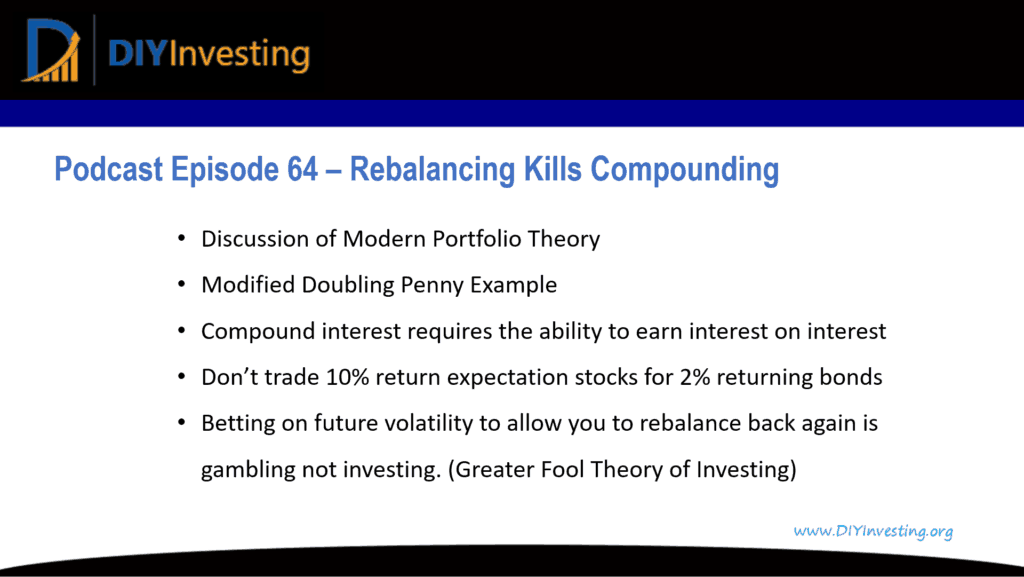Mental Models discussed in this podcast:
- Modern Portfolio Theory
- Compound Interest
- Rebalancing
- Beta / Volatility
Please review and rate the podcast
If you enjoyed this podcast and found it helpful, please consider leaving me a rating and review. Your feedback helps me to improve the podcast and grow the show’s audience.
Follow me on Twitter and YouTube
Twitter Handle: @TreyHenninger
YouTube Channel: DIY Investing
Support the Podcast on Patreon
This is a podcast supported by listeners like you. If you’d like to support this podcast and help me to continue creating great investing content, please consider becoming a Patron at DIYInvesting.org/Patron.
You can find out more information by listening to episode 11 of this podcast.
Show Outline

Modern Portfolio Theory
- According to Investopedia: Modern Portfolio Theory definition
Modified Doubling Penny Example
Three scenarios are compared:
- Base Case Compounding
- Diversified Portfolio
- Diversified Portfolio with Rebalancing
It is a mistake to rebalance from an investment with high return potential into an investment with low return potential.
- If you are going to sell an investment that is up for one that is down then you should be confident that the lower cost investment actually offers a better return.
- Don’t trade 10% return expectations in stocks for 2% return expectations in bonds.
- Betting on future volatility to allow you to rebalance back again is gambling not investing.
Summary:
Rebalancing is an often mentioned tactic utilized in modern portfolios but seldom is it examined from first principles. The act of rebalancing can be useful to offset volatility amongst assets within similar return profiles. However, rebalancing between assets that differ in potential returns can lead to disaster. Compounding requires the ability to earn interest upon interest. If you rebalance away from the compounding asset, then you will counteract the powerful effects of compound interest.
